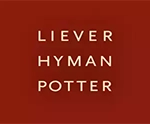From the Desk of Adam K. Levin, Esq. (PA workers’ comp attorney)
Julio Paz Y Mino v. WCAB (Crime Prevention Assoc.), 2010 Pa. Commw. LEXIS 86.
The injured worker, referred to as the Claimant, sustained work-related injuries when he tripped over boxes, fell backwards, and landed on a concrete floor in June of 2000. The Employer issued a Notice of Compensation Payable (NCP) acknowledging a lumbar strain and sprain. In late 2003 to early 2004, the Defendant-Employer/Workers’ Compensation Insurance Carrier filed a Petition to Terminate the Claimant’s benefits alleging that he was fully recovered from his work-related injury. Litigation took place before a Workers’ Compensation Judge (WCJ) and the WCJ concluded that the Employer failed to prove that Claimant was fully recovered from his work-related injuries. In reaching this conclusion, the WCJ did not specifically state that she was amending the injury description contained in the NCP; however, the WCJ credited the testimony of Claimant’s treating physician and expert over the testimony of Employer’s medical expert and she summarized Claimant’s medical expert testimony, in relevant part, as follows:
Based upon his examination and his review of medical records [Claimant’s treating doctor] diagnosed Claimant as having severe stenosis at L4-5 with radiculopathy post-fall and mild L3-4 stenosis.
Claimant’s treating doctor explained that it was the fall at work that caused the underlying degenerative condition to become symptomatic. In other words, the fall aggravated his stenosis.
In July of 2006, the Employer filed a second Termination Petition alleging that Claimant had fully recovered from his work-related injuries and was able to return to unrestricted work. A different doctor examined Claimant at the request of the Employer and the same doctor (and another doctor) testified for the Claimant. The second round of litigation was handled by a new WCJ and the second WCJ issued a decision granting the termination of Claimant’s benefits. The second WCJ acknowledged the first WCJ’s decision had indicated that Claimant was diagnosed with severe stenosis but did not indicate that the condition was the result of the work-injury. Based on her own review of the evidence, the second WCJ found that Claimant’s work-related injuries were limited to a lumbar strain/sprain and that Claimant was fully recovered from his sprain/strain and therefore terminated Claimant’s benefits. The Workers’ Compensation Appeal Board (WCAB) agreed with the second WCJ and affirmed the decision. However, the Commonwealth Court of Pennsylvania held that the WCJ and WCAB were in error and ruled that even though the first WCJ “did not formally indicate the she was amending the description of injury contained in the NCP,” . . . by crediting [Claimant’s treating doctor’s] testimony and denying Employer’s first Termination Petition on the basis of that testimony, the first WCJ implicitly expanded the description of injury to include an aggravation of Claimant’s pre-existing stenosis.”
Because the second WCJ did not recognize that Claimant’s previously accepted work-related injury included an aggravation of his pre-existing stenosis, the second WCJ did not consider whether Claimant was fully recovered from such an aggravation.
The workers’ comp attorneys at Liever, Hyman & Potter, P.C., handle cases just like this as a regular part of our practice in Berks County and Schuylkill County, PA.

